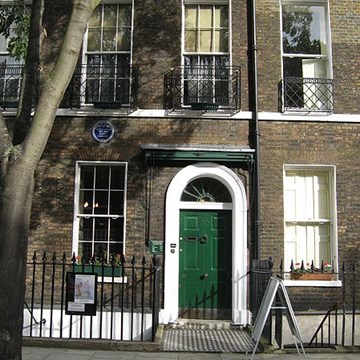Joan Miró Foundation
Fundació Joan Miró
The Joan Miró Foundation opened to the public on 10 June 1975. It had its origins in Miró's first large exhibition in Barcelona, in 1968, at the Antic Hospital de la Santa Creu. Several figures from the world of the arts saw the opportunity to have a space in Barcelona dedicated to the artist's work. However, in accordance with his wishes, the new institution was also to promote and publicise the work of contemporary artists in all its aspects. At a time when artistic and cultural life was certainly minimal, the Foundation brought a refreshing vitality, together with a new, more dynamic concept of an art museum in which Miró's art was shown alongside a wide variety of creative works by other artists - a fact that is reflected in the Foundation's full name of Centre for the Study of Contemporary Art.
The Foundation's collection currently comprises over 14,000 pieces: 217 paintings, 178 sculptures, 9 textiles, 4 ceramics, the almost complete graphic works and some 8,000 drawings. The major part of this collection was donated to the Foundation by Joan Miró himself. Other pieces have come from the collections owned by Pilar Juncosa, the artist's wife, and Joan Prats, his close friend and the driving force behind the idea of setting up the Foundation. There have been subsequent donations by Marguerite and Aimé Maeght, Pierre Matisse, Manuel de Muga, Josep Lluís Sert, Francesc Farreras, Josep Royo, Gérald Cramer and David Fernández Miró, grandson of the artist. An equally valuable part of the Foundation's holdings consists of the works on loan, mainly from members of the Miró family and from the Gallery K. AG founded by Kazumasa Katsuta.
In addition to the works by Joan Miró, the Foundation also has a small collection of contemporary art formed as a tribute to Miró in the year after his death. It consists of gifts and long-term loans of paintings, sculptures, photographs and objects by leading artists including Pierre Alechinsky, Balthus, Anthony Caro, Marcel Duchamp, Max Ernst, Julio González, Wifredo Lam, Fernand Léger, André Masson, Henry Moore, Robert Motherwell, Claes Oldenburg, Robert Rauschenberg, Antonio Saura, Yves Tanguy and Antoni Tàpies. Also worthy of note are the collection of prints by contemporary artists donated by Aimé Maeght in 1976 and other gifts by different artists, among them Andreu Alfaro, Eduardo Chillida and Moisès Villèlia. Two works by Alexander Calder occupy a particularly important place: Hunchback, the gift of Josep Lluís Sert, and the Mercury fountain, originally installed in the Spanish Republic's pavilion at the World's Fair in Paris in 1937, which was donated to the Foundation by Calder himself as a mark of his friendship with Joan Miró.
Exhibitions and events
We don't have anything to show you here.
Educational programs
We don't have anything to show you here.
Collections
We don't have anything to show you here.















